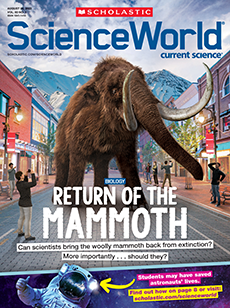With dark spots around her eyes, beige fur, and a long body, Elizabeth Ann looks like any other black-footed ferret. But there’s one thing that sets her apart: She’s a clone. Elizabeth Ann is an identical copy of a black-footed ferret that lived more than 30 years ago. This is the first time that scientists have cloned an endangered animal native to the United States.
Elizabeth Ann looks like any other black-footed ferret. She has dark spots around her eyes, beige fur, and a long body. But one thing sets her apart. She’s a clone. Elizabeth Ann is an identical copy of another black-footed ferret. That one lived more than 30 years ago. Her birth marks the first time scientists have cloned an endangered animal native to the United States.

